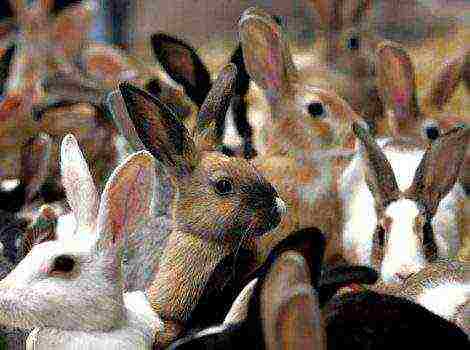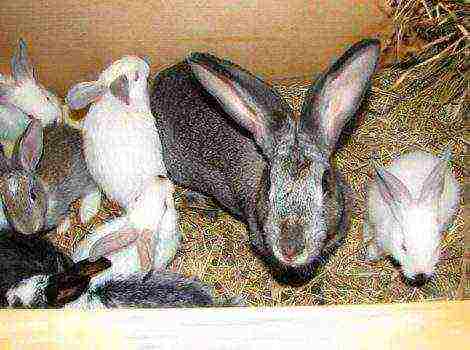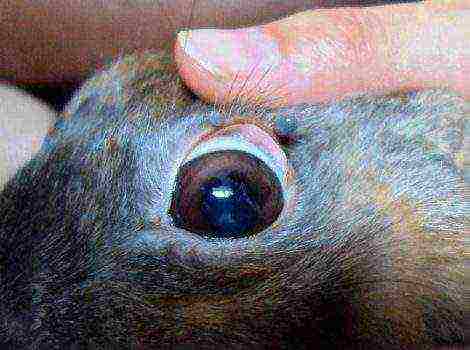Content
Cooking compound feed for rabbits at home
Due to the fact that rabbits are kept in cages or aviaries, they cannot independently provide themselves with food, and this task is entirely dependent on the owner.
Therefore, it is necessary to formulate the diet so that the animal receives all the necessary vitamins and minerals. Proper feeding is the key to the health and rapid growth of rabbits. Therefore, in this article we will talk about compound feed for rabbits, its composition and preparation at home.
Good compound feed for rabbits
The rabbit's diet should consist of a mixture of specially selected plant and mineral components, which together provide the required amount of nutrients. Such a multicomponent mixture is called compound feed. Depending on the need to use it together with other feeds, it is divided into types:
- full-rate;
- feed additives.
Complete feed is used as the only type of feed, without the need for additional feeding of other nutrients. It contains a mixture of plant, animal and mineral components necessary for a rabbit.
They are used as an additional source of nutrition and are mixed with basic types of rabbit feed such as:
- green;
- rough;
- roots;
- silage;
- animals and vitamins and minerals;
- concentrated;
- granular.
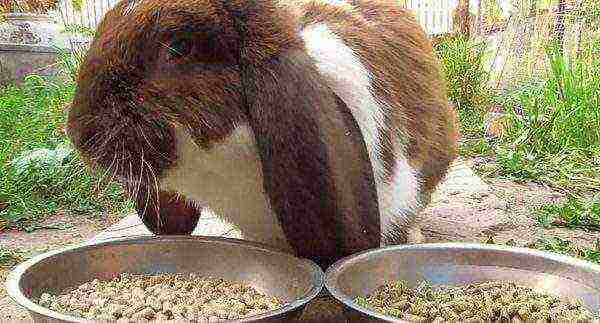
Green feed
Affordable and inexpensive, yet very healthy and nutritious food for rabbits. In the wild, it makes up the lion's share of the daily diet for these animals. The use of green plants allows to reduce the concentration of more expensive components in the compound feed, but still does not allow to abandon them completely.
Succulent green food is available during the warmer season and is especially easy to obtain in mid-spring and early summer before the sun dries up. After a long winter, when rabbits have not received fresh grass for a long time, it should be introduced into their diet gradually, since the abrupt transition affects the intestinal tract, and often leads to the death of a healthy animal.
Of the common crops, rabbits can be fed:
- alfalfa;
- sainfoin;
- Clover;
- Vick.
In addition to them, many wild meadow and steppe herbs, which are found everywhere, are no less useful and nutritious:
- plantain;
- burdock;
- dandelion;
- sagebrush;
- nettle, etc.
Roughage
In winter, when there is no fresh grass, the rabbit's main diet is pre-prepared roughage:
- hay;
- straw;
- tree branches.
Dried grass that was used in the diet in the summer is suitable as hay. Dried grass loses its positive taste and animals eat it less willingly than fresh grass. This is true for hay from meadow or steppe herbs. Rabbits sift through in search of tasty stems, while throwing away less interesting ones. As a result, more than half of the hay is cleared underfoot.
Alfalfa and sainfoin hay is eaten more willingly and in an organized way. It is not only tastier than meadow, but also homogeneous, due to which animals do not dig in it, but take stalks in a row.
Since rabbits have long and sharp front teeth that grow throughout their lives, they need to be ground down. To do this, you need to add young tree branches to the diet. In summer, the shoots should be leafless so as not to cause an eating disorder. Rabbits willingly eat the bark while grinding their teeth.
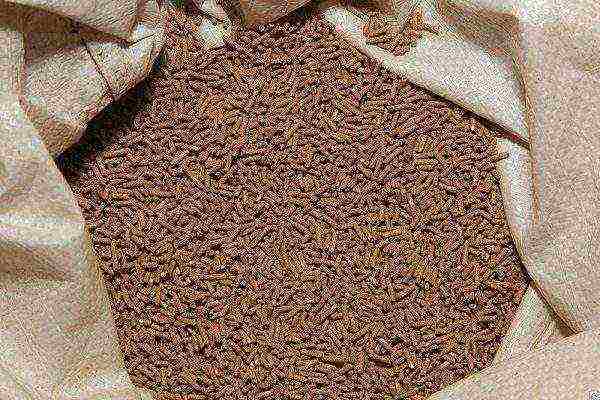
In winter, you can give previously prepared twigs, which were cut and dried in late spring or early summer. Such branches are harvested together with leaves, tied in small bunches and stored in a dry place until winter, after which no more than 200 grams are gradually added to the diet, for each adult per day.
You can use branches in the feed:
- oak;
- birch;
- maple;
- alder;
- rowan;
- acacia, etc.
Roots
An important part of the daily diet, especially in winter, when there is an acute shortage of juicy vitamin feed. Rabbits willingly eat roots and tubers, such as:
- beet;
- carrot;
- potato;
- Jerusalem artichoke.
Potatoes and Jerusalem artichoke must be pre-cooked, after which they can be served crushed in a mixture with cereals and other additives.
Silage
Silage is an excellent type of food for maintaining vitamin balance in rabbits in winter. The basis for its preparation is taken from sunflower, corn, carrots, cabbage or beets. It is important to ensure that the silage is not spoiled, therefore, when preparing it, you must strictly adhere to the technology.
To do this, the green mass must be crushed and tamped tightly into a container. Top up with a layer of sawdust and hermetically cover with clay. If cracks appear in the clay, they must be covered immediately to prevent air from reaching the silo.
Animals and vitamin and mineral feed
Lack of vitamins and minerals is a very common problem in winter, especially in the absence of stocks of root crops or silage. In this case, special animals or vitamin and mineral supplements will come to the rescue, such as:
- feed yeast;
- bone flour;
- fish flour;
- a piece of chalk;
- salt;
- tricalcium phosphate, etc.
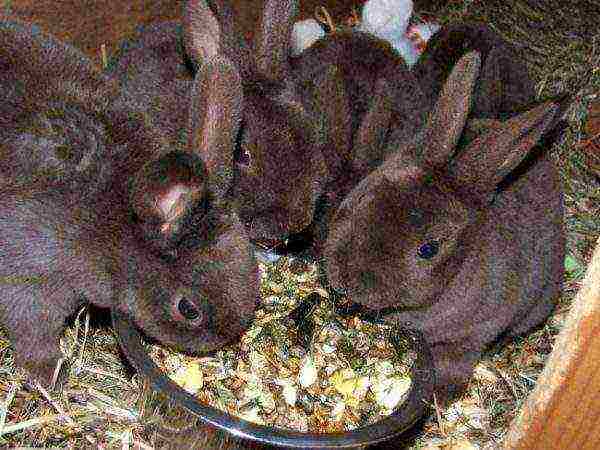
Concentrated feed
This group includes grain feed. For rabbits, it is best to use a mixture of different types of crops, including:
- wheat;
- corn;
- barley;
- oats;
- soy, etc.
You can give the grain of one crop in its pure form without mixing, but you should be careful of protein-containing ones, namely corn and soybeans, which can be harmful in large quantities.
You may also be interested in the following articles:
- Keeping decorative rabbits at home.
- How and what to feed a decorative rabbit at home?
- How to treat myxomatosis in rabbits?
Granulated feed
Balanced pellets can provide your rabbit with everything it needs to grow and maintain its body. This feed consists of a proportional mixture of many components that are compressed into pellets. Such granules are easily eaten by rabbits, while they grind the teeth of animals.
The granules are poured into a special feeder, from which they are eaten by rabbits. This reduces the time required to maintain rabbit cages, especially when using automatic hopper feeders.In addition, the cage stays clean for much longer than with other types of feed, since there is no waste of uneaten and spoiled feed.
For the manufacture of this type of feed at home, special equipment is needed. Therefore, as a rule, dry granules are bought in the store, which carries significant financial costs. You can choose pellets according to the rabbit's age, gender and breeding goals. This feed is produced for:
- little rabbits;
- adults;
- females in lactation;
- fattening for meat.
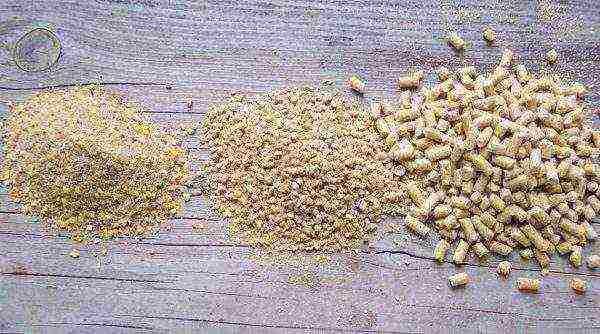
The need for compound feed
Compound feed is the healthiest and most nutritious food for rabbits. Its use is especially important when keeping several animals in a group in one cage. This is due to the fact that the stronger individual will eat the most energetically valuable type of food, leaving only waste for the weak animals. In the case of feeding with compound feed, such a probability disappears, since the entire mass turns out to be homogeneous and it will not work to sort out its components.
Feeding with mixed fodder allows achieving high results in increasing the mass of rabbits, increasing milk production in lactating rabbits. This is especially useful in winter, when it is not possible to provide a full-fledged diet using disparate types of feed.
Do-it-yourself compound feed preparation at home
And now let's talk about making compound feed for rabbits at home with our own hands. Self-production of compound feed reduces the cost of keeping rabbits. For the manufacture of compound feed, you will need equipment for grinding grain.
There are several popular compound feed recipes, with different nutritional values depending on the purpose of their application.
Recipe for fattening meat
It is used for feeding animals before slaughter, which allows them to gain the necessary weight in a minimum amount of time. For fattening compound feed you will need:
- herbal flour 40%;
- barley 20%;
- corn 10%;
- wheat 10%;
- sunflower cake 10%;
- soybean 5.5%;
- feed yeast 2%;
- meat and bone meal 2.2%;
- table salt 0.3%.
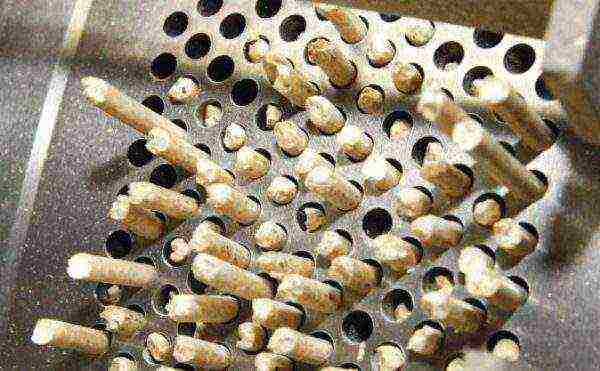
Recipe for enhanced nutritional value
It is used for pregnant and lactating rabbits, male breeders with active breeding and sown young. It is important not to use compound feed for fattening for meat for newly planted rabbits, since for the initial diet they require a high content of calcium, which is not available in the required amount in other recipes. For a reinforced compound feed, you need to mix:
- herbal flour 30%;
- barley 20%;
- oats 20%;
- wheat 12.5%;
- sunflower cake 13%;
- fish meal 2%;
- bone meal 1%;
- feed yeast 1%;
- table salt 0.5%.
Seasonal feeding features of rabbits
In the summer, there is no hassle with feeding, since there are sufficient amounts of green food, which, in combination with concentrated ones, can support the normal development of the animal's body. But in winter, roughage that form the basis of the diet cannot provide all the needs, especially for young animals, pregnant and lactating rabbits.
Thus, feeding rabbits with compound feed eliminates the need to periodically maintain the required level of a particular feed in the cage.It allows you to completely eliminate or reduce the consumption of hay, root vegetables and other components of the daily diet.
In addition, it can be poured into a bunker feeder in large quantities, which will eliminate the need for periodic feeding for a certain period of time. What is the best compound feed for rabbits? Purchased or homemade, it's up to you.
